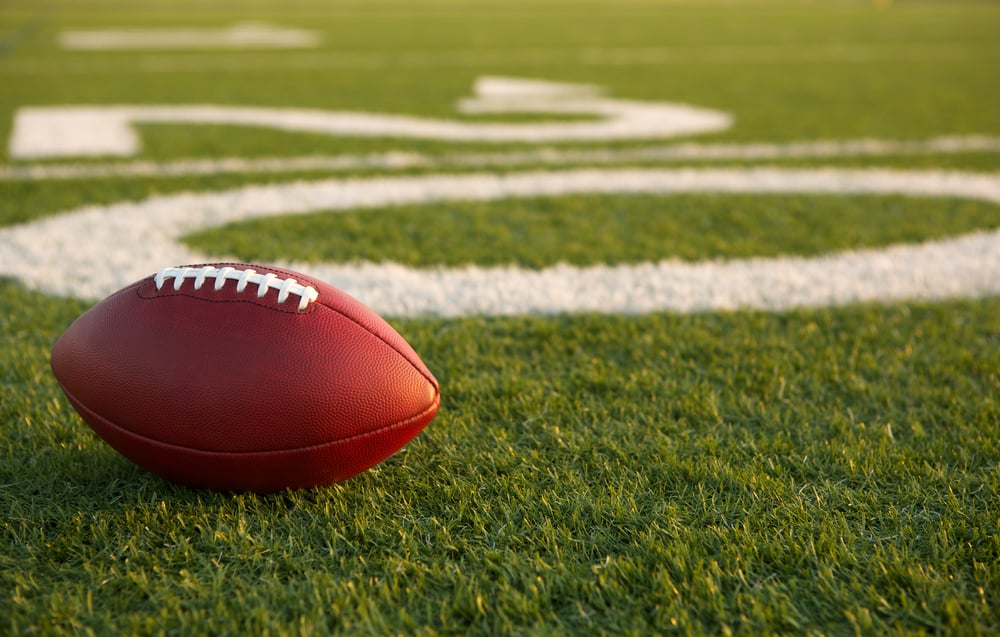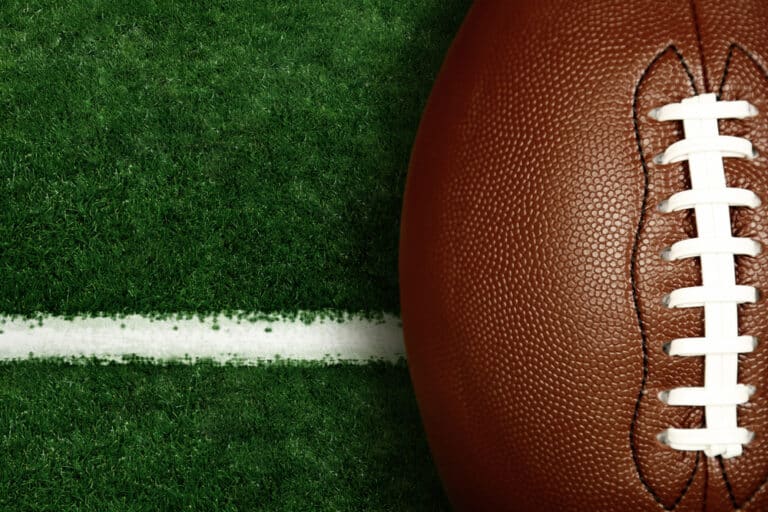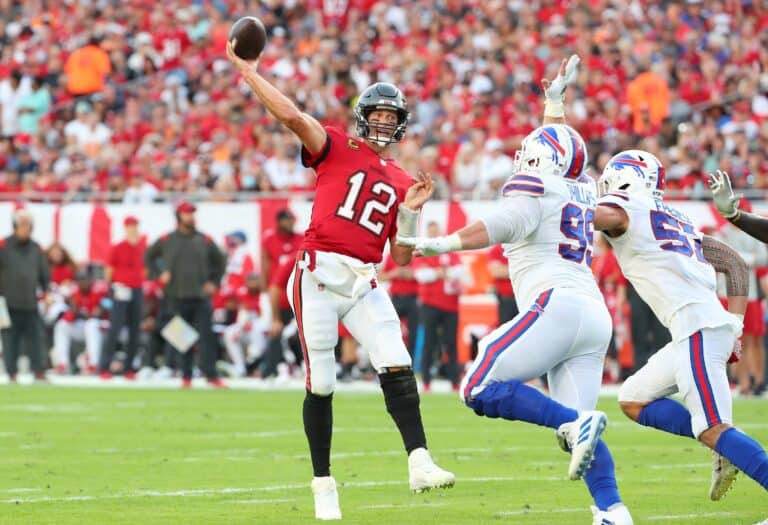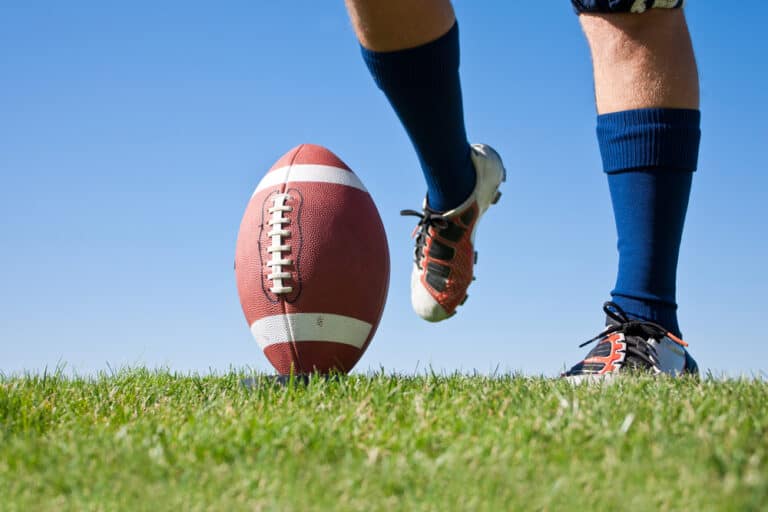Where Do You Get The Ball After A Missed Field Goal?
The field goal is an integral part of football’s offense, and many exciting games have been won on that final second field goal. But if the field goal is unsuccessful, where do you get the ball after a missed field goal?
After a missed field goal attempt, the ball is placed at the 20-yard line of the opposition if the kick was taken on or inside the 20-yard line. If the kick was attempted outside the 20-yard line, the ball is placed at the spot the kick was taken, and a new set of downs is awarded.
Let’s explore the various circumstances where the ball is placed after a missed field goal, some exceptions to this rule that cover interceptions, and what happens if a field goal is blocked.
What Is A Field Goal In Football
The field goal is where the team on offense will look to score points by kicking the ball through the goalposts instead of going for another passing or running play. This would usually happen on a 4th or 3rd down, depending on the state of the game.
This can happen where the offensive team has achieved field position in range for their kicker to attempt a field goal, or they have scored a TD and are looking for the extra point conversion.
Where Is The Ball Placed After A Missed Field Goal
While most kickers will make most field goals from around 30-40 yards out, there are times when these field goal attempts are missed, and depending on where the kick was taken from, will determine where the opposition will get the ball.
If the kick were taken on the 20-yard line, the ball would be placed on that line, and a new set of downs will be awarded to the opposition. Remember that if a field goal is missed, possession is automatically forfeited, and the defense will take over – but there are situations where the offense may recover an unsuccessful field goal too.
Where the field goal attempt was further than the 20-yard line, the ball will be placed on the spot where it was snapped, the opposition will be awarded a new set of downs, and their offensive team will come onto the field.
If the field goal is the extra-point attempt after a touchdown and it is missed, possession is awarded to the defense, and the ball is placed at the 20-yard line with a new set of downs in play.
What Is The Difference Between A Missed Field Goal And A Blocked Field Goal
We need to distinguish between a missed field goal and a blocked field goal. The net result is that no points are awarded for the attempt, whether missed or blocked.
A missed field goal is where the goals are missed to the left or right, or the ball falls short, while a blocked field goal is where the defense manages to get a hand on the ball after it was kicked, and this causes the ball to be deflected either in front of or behind the line of scrimmage.
In each case, the goal attempt is unsuccessful, but the placement of the ball after a missed field goal vs. a blocked field goal are different.
Is The Ball Considered Live When A Field Goal Is Blocked
While this doesn’t happen very often, especially after the NFL outlawed the ‘run-and-jump’ where defensive players would run and leap to try and block the ball after it was kicked, it can happen, and when it does, the rules around the recovery of the ball will be applied.
If the ball is blocked and lands inside the field of play between the goal line and the line of scrimmage, it is considered live, and either team can recover it. If the ball is tipped and caught by the offense, they can run it into the end zone for a two-point return, and the same applies to the defense.
If the ball is blocked and rolls over the goal line, or over the dead ball line or out of bounds, the ball is called over, and the defense will recover the ball for their next round of offense.
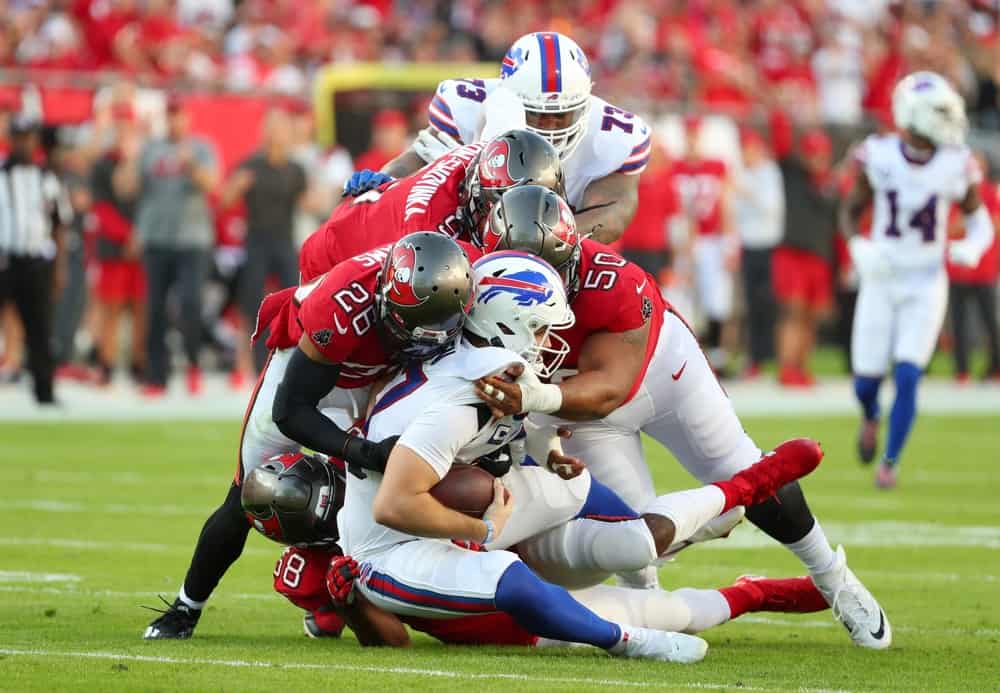
Can The Offense Be Awarded A New Set Of Downs On A Blocked Field Goal
Yes, they can. This can occur when the field goal is blocked and then recovered by the offense. If the ball is carried forward over the first down gain line, as in normal play, the offense will be awarded a new set of four downs.
So, if the kick was taken at the 35-yard line on 4th and 8, and the offense recovers the blocked ball and advances to the 20-yard line, they have gained 15 yards, which will be the first down.
Remember, this only applies to a blocked field goal; if the ball misses the goalposts laterally, the ball is dead, and the defense takes over from the spot where the ball was kicked if the attempt was further than the 20-yard line.
Can The Defense Score From A Blocked Field Goal
As the offense can recover the ball and attempt to run into the end zone, the defense can do the same. If they recover the ball after a blocked field goal, they can run downfield and score the two-point return, and this can make for some very exciting events in a tight game.
Remember that these rules of recovery only apply to a ball that has been blocked by the defender and not to a field goal attempt that has missed the goal laterally.
Conclusion
It’s important to know the basic difference between a missed field goal in football and a blocked field goal, as while the result of each is the same in terms of an unsuccessful attempt at points, the resulting ball placement and following rules of play are different.
The only considerations for a missed field goal and where you get the ball afterward depend solely on where the kick was taken and that the possession is automatically turned over and awarded to the defense.

